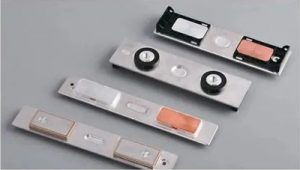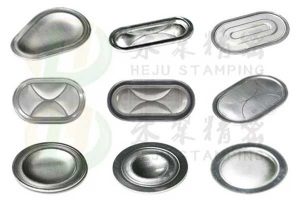Why the Specifications of EV Prismatic Lithium Battery Safety Ventings are Different?
There are many specifications for EV Prismatic lithium battery safety ventings, mainly because different battery types, brands and vehicle needs lead to different specifications. Before explaining this problem, we must first understand what a new energy vehicle battery safety vent is and its function.
What is a New Energy Vehicle Prismatic Lithium Battery Safety Vents?
New energy vehicle lithium-ion battery safety ventings prevent battery explosion or fire accidents when overheating, overcharging, or other abnormal conditions. It is usually a thin sheet made of a layer of special material that can quickly release the pressure within the battery when an abnormality occurs and prevent the spread of flames and gases, thus protecting the safety of the vehicle and the people inside the vehicle.

Reason of the Specifications of EV Battery Safety Vents are Diversified
- Differences in Battery Types:
There are many new energy vehicle batteries, including lithium-ion batteries, lithium polymer batteries, etc. Different types of batteries have different chemical compositions, energy densities, cycle life, etc., so different specifications of safety ventsneed to be used to adapt to these differences.
- Differences in Battery Sizes
New energy vehicle batteries of different models have different sizes, so different specifications of safety ventsneed to be designed according to the size of the battery. For example, small electric vehicle batteries are generally compact and use relatively small safety vents. In contrast, larger electric vehicle batteries have larger capacities and volumes, requiring larger safety vents.
- Vehicle Requirements
Different new energy vehicles have differences in battery pack size, installation structure and battery system configuration. Therefore, to adapt to the needs of different models, the size, shape and performance of the safety ventswill also vary.
- Differences in Usage Environment
New energy vehicles may face different environmental conditions during use, including temperature, humidity, etc. These environmental factors will affect the battery’s working performance and safety performance. Therefore, it is necessary to select the corresponding safety ventspecifications according to different environmental conditions to ensure the battery’s safe operation in various environments.
- Driven by Technological Development
With the continuous development and advancement of new energy vehicle technology, battery performance and safety requirements are also constantly increasing. Therefore, safety ventsof different specifications are constantly being developed and optimized to meet the development needs of new energy vehicles.

In Conclusion
In general, car companies’ different requirements for battery safety vents are determined by factors such as battery performance differences, vehicle usage scenarios, safety standards, and regulatory requirements, as well as the car companies’ requirements and technical capabilities. As new energy models increase and the production cost of battery explosion-proof valves gradually increases, their specifications will only increase. It will be difficult for battery manufacturers to find manufacturers of safety vents that can match them, which in disguise hinders power. Large-scale standardized production of batteries is not conducive to cost reduction of new energy vehicle batteries. Even after passing the test, verifying its feasibility will take a long time, which increases the difficulty of matching and procurement for vehicle companies.
Heju Stamping-Electric Vehicle Prismatic Lithium Battery Ventings Manufacturer
Dongguan Heju Precision Electronic Technology Co., Ltd. is a company specializing in the production of battery safety vents for new energy vehicles. It is one of the earliest companies in China to develop and produce EV battery venting valves. It has many models, comprehensive specifications, and a single unit pressure range of up to 0.03MPA. CPK>2.0. It can cooperate with customers in developing new products and has passed the three major certification systems: ISO9001, ISO14001 and IATF16949.
